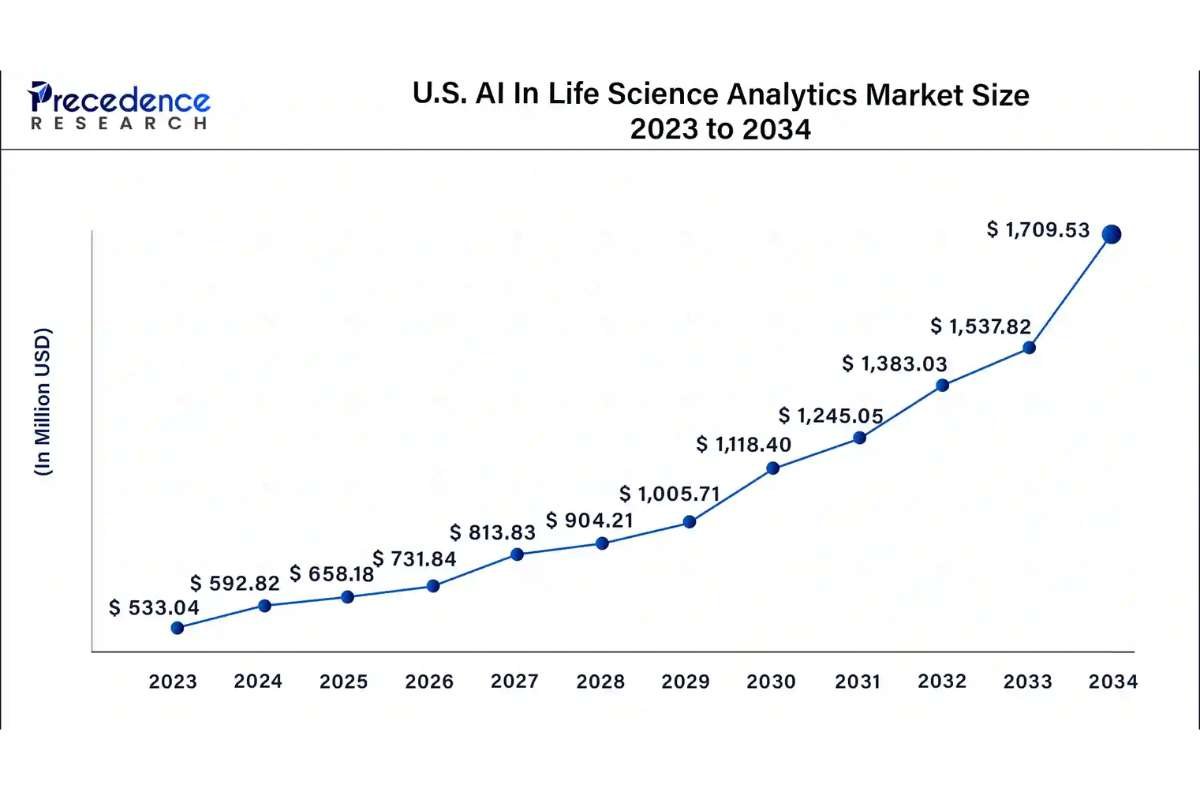Rapid Market Expansion Fueled by Tech Innovation
The global life science analytics market is on a remarkable growth trajectory, projected to triple in size over the next decade. Valued at USD 35.60 billion in 2024, the market is anticipated to reach USD 107.64 billion by 2034, expanding at a compound annual growth rate (CAGR) of 11.70% from 2025 to 2034. This surge is largely driven by the growing incorporation of artificial intelligence (AI), machine learning, and big data analytics in drug development and healthcare delivery.
North America currently leads the market due to its robust healthcare infrastructure and early adoption of digital technologies. Europe holds the second-largest share, while Asia Pacific is emerging rapidly, backed by government investments in digital health, increased pharmaceutical R&D, and growing interest in personalized medicine. As emerging economies ramp up their digital transformation efforts, market dynamics are expected to evolve further, creating new growth hotspots.
Trends Shaping the Life Science Analytics Landscape
Several factors are fueling the market’s momentum. The rising volume of clinical trial data, patient health records, and real-world data (RWD) is pushing the demand for advanced analytics tools. AI and machine learning are revolutionizing the way companies conduct drug discovery, predict diseases, and personalize treatments. Additionally, regulatory mandates and the pressure to curb healthcare costs are compelling organizations to adopt smarter analytics solutions.
Key trends include the rising importance of real-world evidence (RWE) for regulatory and market access decisions, the growing shift to cloud-based analytics for cost efficiency and scalability, and the use of predictive analytics for proactive care. Integration with wearable devices and the Internet of Things (IoT) is also enhancing real-time monitoring and patient engagement.
Despite its growth, the market faces notable challenges such as high implementation costs, data privacy concerns, and a shortage of skilled analytics professionals. However, these are counterbalanced by promising opportunities in emerging markets, greater adoption of electronic health records (EHRs), and the monetization of de-identified health data.
Key Players, Strategic Moves, and Future Outlook
The life science analytics sector is witnessing a wave of strategic partnerships, acquisitions, and product innovations. Notable developments include IBM Watson Health’s acquisition by Francisco Partners, IQVIA’s launch of a virtual trials platform, and Oracle’s acquisition of Cerner Corporation to bolster its analytics offerings.
The competitive landscape remains moderately consolidated with leading firms such as Accenture, Cognizant, IBM, Oracle, IQVIA, SAP, SAS Institute, and Wipro driving innovation. These companies provide solutions ranging from real-world data insights and clinical trial optimization to regulatory compliance and patient engagement tools.
With the continued rise of AI, cloud computing, and data interoperability, the market is poised for a transformative decade. Companies that invest in advanced analytics and forge strategic collaborations will be well-positioned to lead in this data-driven era of healthcare and life sciences. As precision medicine gains ground, life science analytics will become central to delivering more efficient, personalized, and cost-effective care worldwide.







